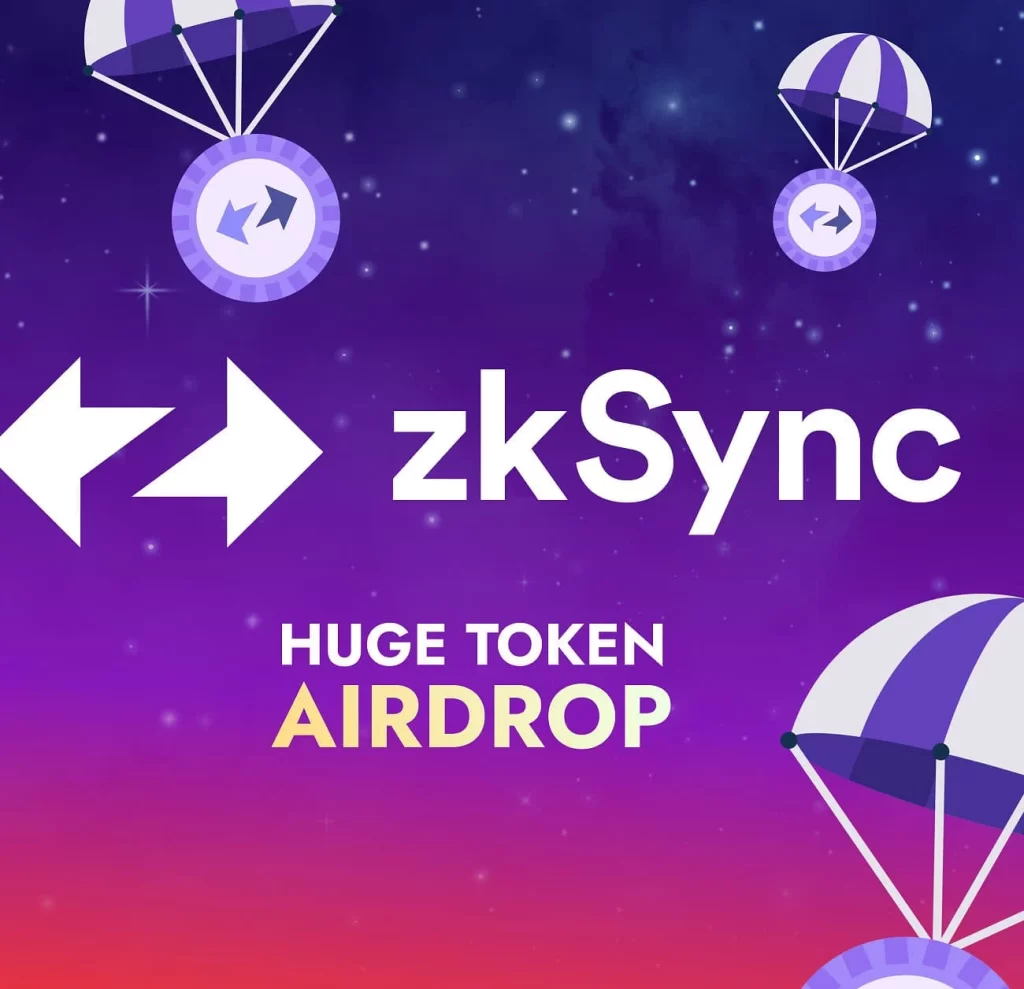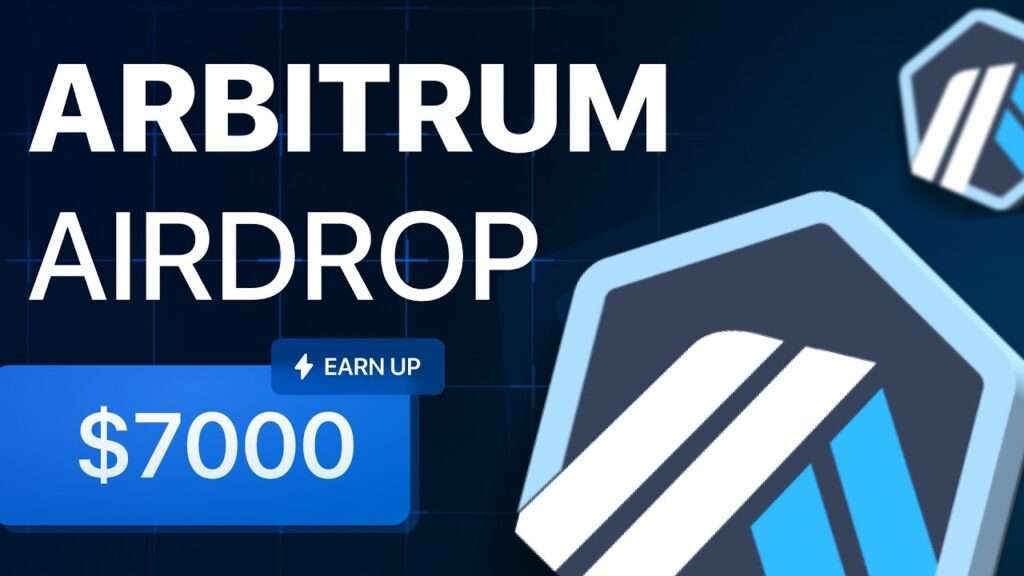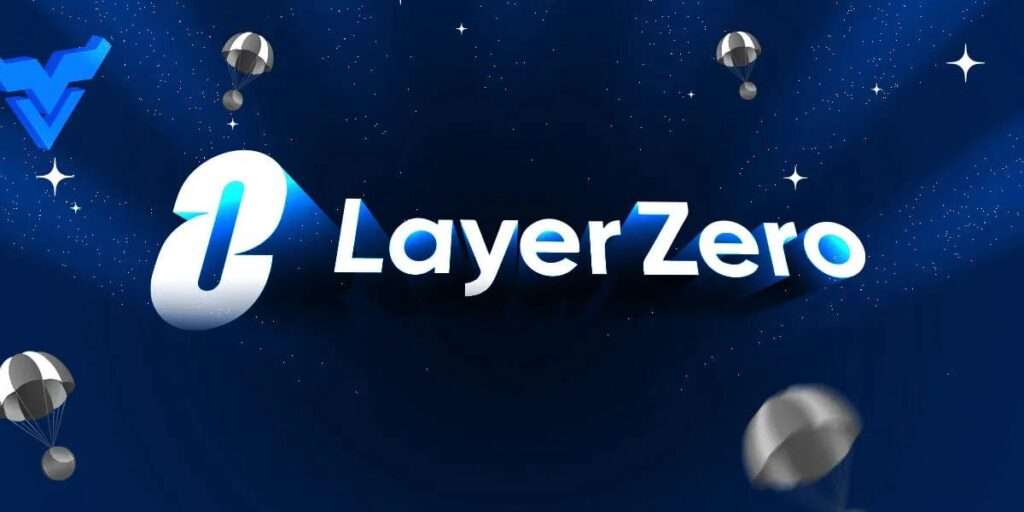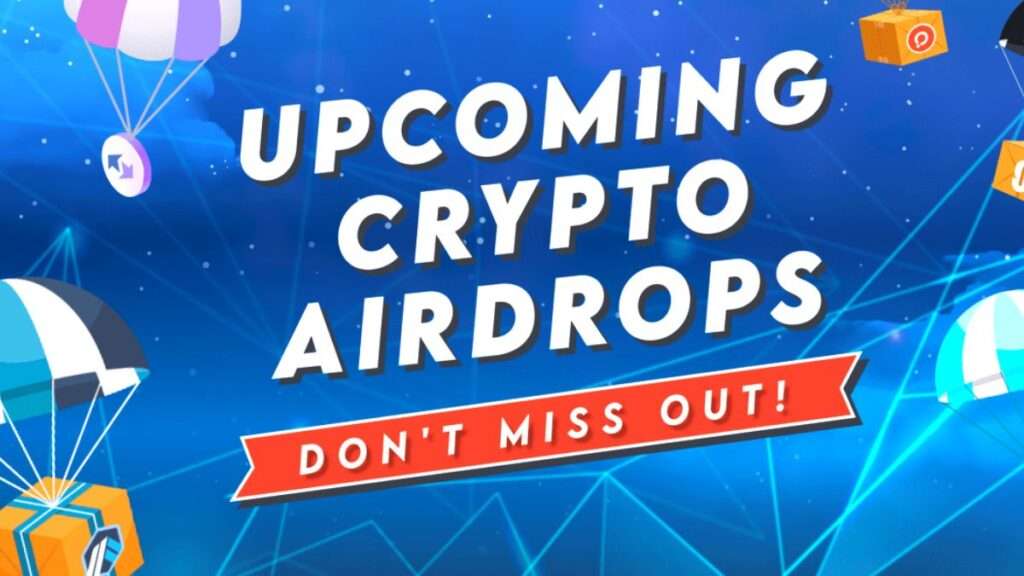Table of Contents
ToggleWhat is a crypto airdrop and How to get crypto Airdrops in 2023?
A crypto airdrop is a marketing strategy used by blockchain companies to promote their cryptocurrency or token. It involves giving away a certain amount of free tokens or coins to existing holders of a particular cryptocurrency, or to new users who sign up for a platform or participate in a specific activity.
Airdrops are usually conducted through social media channels or online communities, and participants are required to perform a series of tasks or meet certain conditions to receive the free tokens. These tasks can include things like following the company’s social media accounts, sharing a post, or referring new users to the platform.
The goal of a crypto airdrop is to increase awareness and interest in a particular cryptocurrency or platform, as well as to incentivize users to become more engaged with the community. Airdrops can also be used as a way to distribute tokens fairly and democratically, without the need for an initial coin offering (ICO) or other fundraising methods.
Airdrops can be a valuable opportunity for users to get their hands on free tokens or coins, but it’s important to be cautious and do your research before participating. Some airdrops may be scams or fraudulent, and participants may be required to provide sensitive personal information or access to their cryptocurrency wallets, which could result in theft or loss of funds.
In conclusion, crypto airdrops are a popular marketing strategy used by blockchain companies to promote their cryptocurrency or platform. While they can be a valuable opportunity for users to receive free tokens or coins, it’s important to be cautious and do your research before participating to avoid scams or fraud.
Upcoming Airdrop in 2023- Potential to earn Huge Passive Income
1. SEI Network:
Sei Network is a layer1 blockchain built on Cosmos with a focus on creating a next-generation DeFi infrastructure that is reliable and secure with high throughput. One of Sei’s key strengths is its ability to integrate with DApps on its native blockchain, as well as create markets using the Cosmos ecosystem and its liquidity.
The core infrastructure of Sei Network is its centralized order books (CLOB), which are operated by several DEXs with limited order books. This marks a move towards more mature DeFi ecosystems. The Sei Network DApp is built on top of these CLOBs, with each CLOB-related order matched by a native order after each block closes. This approach enables numerous applications on Sei Network.
Sei Network, as a layer1 blockchain designed for trading, has several advantages, including:
- Firsthand trading protection: orders are aggregated after a block closes and executed at the same price to prevent preemptive trading.
- Biturbo consensus: optimized functions enhance block propagation and operation.
- Native order match engine: provides tailor-made designs for DEXs, such as specially-made order books for chains.
- Transaction duration: 600ms.
Sei Network is compatible with EVM and Cosmwasm, which allows Ethereum and Cosmos applications to be deployed on the platform. Currently, Sei Network has launched over 70 apps, including decentralized derivative protocol VortexProtocol and decentralized synthetic asset protocol PharaohFi. More DApps are expected in the future.
Sei was co-founded by Jeffrey Feng and Jayendra Jog, with core team members from fields such as the internet and traditional finance, including Robinhood, Databricks, Airbnb, and Goldman Sachs. In August, Sei Labs secured $5 million in seed round financing, led by Multicoin Capital, with participation from Coinbase Ventures, GSR, Flow Traders, Hudson River Trading, Delphi Digital, Tangent, and others.

2. zkSync Layer2 Protocol
zkSync is a Layer2 scaling solution that uses zero-knowledge proofs (zk proofs) to enhance the transaction processing capacity of Ethereum. It is built on top of the Ethereum blockchain and uses a rollup architecture that compresses multiple transactions into a single transaction before submitting them to the Ethereum mainnet.
The zkSync protocol leverages the power of zk proofs to enable fast and secure transactions with minimal fees. It works by bundling multiple transactions into a single batch, which is then submitted to the Ethereum mainnet. The transactions are verified using zk proofs, which allow the network to validate the batch without needing to verify each transaction separately.
One of the key features of zkSync is its ability to support both ETH and ERC-20 tokens. This allows users to interact with a wide range of decentralized applications (dApps) and exchanges that use Ethereum as their underlying infrastructure.
zkSync also provides a high degree of scalability, enabling it to process thousands of transactions per second. This is achieved through its rollup architecture, which compresses multiple transactions into a single transaction that is submitted to the mainnet. By reducing the number of transactions that need to be verified on-chain, zkSync is able to significantly reduce transaction costs and improve processing times.
Another important feature of zkSync is its support for smart contracts. This enables developers to build and deploy complex dApps that can take advantage of the protocol’s scalability and security features. Developers can use familiar programming languages like Solidity to create smart contracts, which can then be deployed on zkSync.
Overall, zkSync is a promising Layer2 scaling solution that offers significant improvements in transaction processing speed, cost, and scalability. Its use of zk proofs and rollup architecture make it a secure and efficient solution for Ethereum-based dApps and exchanges, and its support for smart contracts makes it a powerful platform for developers looking to build next-generation decentralized applications.
3. ZigZag Decentralized Order Book Exchange:
ZigZag is a decentralized order book exchange that runs on the Ethereum blockchain. It aims to offer a secure and transparent platform for trading cryptocurrencies without relying on a central authority.
The main feature of ZigZag is its decentralized order book that is powered by an Ethereum smart contract. This ensures that all trades are executed in a transparent and trustless way, without the need for a central authority to match buyers and sellers.
Traders can connect to ZigZag using their Ethereum wallets and place buy and sell orders for a range of cryptocurrencies, including Ethereum, Bitcoin, and other ERC-20 tokens. The order book is updated in real-time, providing traders with the latest information on market prices and liquidity.
ZigZag emphasizes user privacy, with the platform not collecting any personal information from its users. This makes it an attractive option for traders who value their privacy and want to avoid the risks associated with centralized exchanges.
Along with its decentralized order book, ZigZag also provides advanced order types, such as limit and stop-limit orders, as well as support for market orders that enable traders to buy or sell at the current market price.
Overall, ZigZag is a promising decentralized exchange that offers traders a transparent, secure, and user-friendly platform for trading cryptocurrencies. Its support for a wide range of cryptocurrencies, decentralized order book, and focus on user privacy make it a strong competitor to centralized exchanges and a promising option for traders looking to trade in a trustless and transparent manner

4. Arbitrum Optimistic Roll-up Layer 2:
Arbitrum is a layer 2 scaling solution for the Ethereum blockchain that uses optimistic roll-up to enable faster and cheaper transactions. The system processes transactions off-chain and only submits the final results to the Ethereum blockchain, reducing the number of transactions that need to be processed by the network. It supports smart contracts and is compatible with existing Ethereum tools and infrastructure, making it an attractive option for developers and users looking to build and use decentralized applications.
Arbitrum uses a fraud proof system for dispute resolution, in which users can submit proofs to the Ethereum network if they believe a transaction has been processed incorrectly or fraudulently. If the proof is valid, the system will automatically penalize the responsible party.
Overall, Arbitrum offers a promising solution to the scalability issues facing the Ethereum network. By enabling faster and cheaper transactions while maintaining the security and trustlessness of the underlying blockchain, it has the potential to facilitate the growth of decentralized applications and drive adoption of the Ethereum ecosystem. Its compatibility with existing Ethereum infrastructure makes it easy for developers and users to adopt, while its fraud proof system ensures the integrity of the system.
5. Sui BlockChain:
SUI Blockchain is a decentralized blockchain platform designed for building and deploying decentralized applications (dApps) and smart contracts. It is based on the Ethereum blockchain and uses a proof-of-stake consensus mechanism to validate transactions and maintain the integrity of the network.
One of the key features of SUI Blockchain is its scalability. It uses a sharding mechanism to divide the network into smaller groups, or shards, that can process transactions in parallel. This enables the network to handle a large number of transactions without sacrificing speed or efficiency.
Another important feature of SUI Blockchain is its interoperability with other blockchain networks. It supports cross-chain communication and allows for the seamless transfer of assets and data between different blockchain networks.
SUI Blockchain also offers a range of tools and resources for developers, including a user-friendly development environment and a range of APIs and SDKs. This makes it easy for developers to build and deploy dApps and smart contracts on the platform.
Overall, SUI Blockchain is a promising blockchain platform that offers scalability, interoperability, and a range of developer tools. Its sharding mechanism and support for cross-chain communication make it well-suited for building large-scale decentralized applications, while its user-friendly development environment makes it accessible to developers of all levels of experience.

6. LayerZero Cross Chain Applications:
LayerZero Cross Chain is a cross-chain platform that allows for the seamless transfer of digital assets between different blockchain networks. It is designed to facilitate interoperability between different blockchain networks and enable users to transfer assets without the need for a centralized intermediary.
The LayerZero Cross Chain platform uses a decentralized architecture and advanced cryptography to ensure the security and integrity of transactions. It supports a wide range of digital assets, including cryptocurrencies, tokens, and NFTs, and is compatible with a variety of blockchain networks, including Ethereum, Binance Smart Chain, and Polkadot.
One of the key features of LayerZero Cross Chain is its user-friendly interface. It is designed to be accessible to users of all levels of technical expertise and offers a range of tools and resources to help users navigate the platform and execute transactions.
Another important feature of LayerZero Cross Chain is its speed and efficiency. It uses advanced algorithms to optimize transaction processing and reduce the time and cost associated with transferring assets between different blockchain networks.
Overall, LayerZero Cross Chain offers a promising solution to the challenges of cross-chain interoperability. Its decentralized architecture, advanced cryptography, and user-friendly interface make it well-suited for facilitating the seamless transfer of digital assets between different blockchain networks.
7. Quai Network:
Quai Network is a decentralized platform that enables individuals and organizations to create, trade, and manage digital assets. It is built on the Ethereum blockchain and uses a proof-of-stake consensus mechanism to validate transactions and maintain the integrity of the network.
The platform offers a range of tools and resources for asset creation, including customizable templates and smart contract libraries. This makes it easy for users to create and deploy a wide range of digital assets, including cryptocurrencies, tokens, and NFTs.
Quai Network also offers a decentralized exchange (DEX) for trading digital assets. The DEX is powered by an automated market maker (AMM) algorithm that ensures liquidity and efficient price discovery.
Overall, Quai Network is a promising platform for digital asset creation and trading. Its user-friendly interface and customizable templates make it easy for users to create a wide range of digital assets, while its DEX and AMM algorithm provide a seamless and efficient trading experience.
8. Thetanuts Finance:
ThetaNuts Finance is a decentralized finance (DeFi) platform built on the Binance Smart Chain (BSC). It offers a range of DeFi services, including yield farming, staking, and a decentralized exchange (DEX).
The platform’s native token is NUTS, which is used for governance and to incentivize users to participate in the platform’s various services. NUTS holders can vote on proposals related to the platform’s development and governance, as well as earn rewards for staking and liquidity provision.
One of the unique features of ThetaNuts Finance is its “Burning Mechanism,” which helps to reduce the total supply of NUTS over time. This mechanism burns a portion of the fees generated by the platform, which helps to create scarcity and increase the value of the token.
Overall, ThetaNuts Finance offers a range of DeFi services on the Binance Smart Chain, with a focus on incentivizing users through its NUTS token and governance mechanism. Its Burning Mechanism also adds an element of deflationary pressure to the platform, which could increase the value of NUTS over time.
9. Allendis Enabling Uncollateralized Crypto Loans
Allendis is a decentralized finance (DeFi) platform that enables uncollateralized crypto loans. Unlike traditional loans that require collateral, Allendis uses an algorithmic credit scoring system to evaluate borrowers and determine their creditworthiness.
The platform’s native token is ALLD, which is used for governance and to incentivize users to participate in the platform’s various services. ALLD holders can vote on proposals related to the platform’s development and governance, as well as earn rewards for staking and liquidity provision.
Allendis uses a unique algorithmic credit scoring system called the “Allendis Score,” which evaluates a borrower’s creditworthiness based on their transaction history, social media activity, and other factors. This enables borrowers to access loans without having to put up collateral, which is a major barrier for many individuals and businesses.
Overall, Allendis is a promising platform for uncollateralized crypto loans, with a focus on incentivizing users through its ALLD token and governance mechanism. Its algorithmic credit scoring system is a unique feature that could make it more accessible and appealing to a wider range of borrowers.
10. Shardeum: EVM-Compatible Sharded Blockchain
Shardeum is a sharded blockchain platform that is compatible with the Ethereum Virtual Machine (EVM). The platform uses sharding to increase transaction throughput and reduce network congestion, making it faster and more efficient than traditional blockchain platforms.
Shardeum’s sharding mechanism allows it to split the network into smaller, more manageable parts called “shards.” Each shard can process transactions independently, which helps to increase overall network capacity and reduce transaction fees. In addition, Shardeum is fully compatible with the EVM, which means that developers can easily port their existing Ethereum-based applications to the platform.
Overall, Shardeum is a promising blockchain platform that uses sharding and EVM compatibility to offer faster and more efficient transaction processing.
11. ZetaChain: Enabling Messaging Across Blockchains
ZetaChain is a blockchain platform that enables messaging across different blockchain networks. The platform is designed to provide a unified messaging system that can be used to communicate between different blockchain protocols and networks.
ZetaChain uses a unique protocol called “ZetaTX” to enable cross-chain messaging. This protocol allows users to send messages between different blockchain networks, such as Bitcoin, Ethereum, and Binance Smart Chain. The messages can include instructions for executing smart contracts, transferring assets, or performing other blockchain operations.
Overall, ZetaChain is a promising platform for cross-chain messaging and interoperability. Its ZetaTX protocol could help to break down barriers between different blockchain networks, making it easier for users to interact and transact across different protocols.
Conclusion
In conclusion, the potential drops for 2023 have been discussed in this article, but it is not an exhaustive list and there is no certainty that the drops mentioned will come to fruition. To increase the chances of being eligible for these drops, staying active in the space and engaging with the projects are recommended.
It is important to note that this content is for educational purposes only and should not be taken as financial advice. It is always wise to conduct your own research before making any decisions to interact with protocols or decentralized applications.
